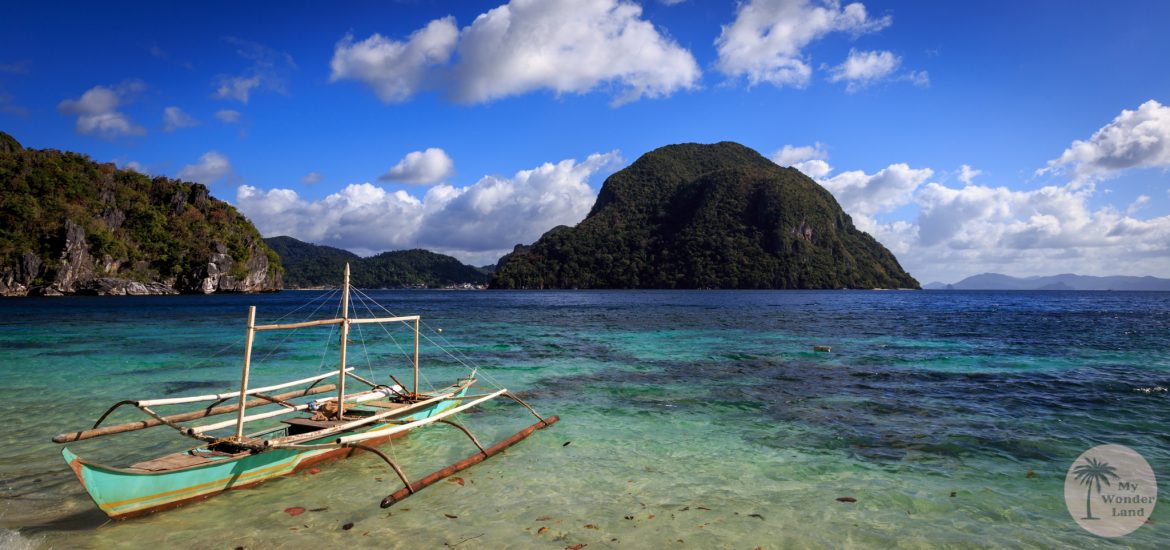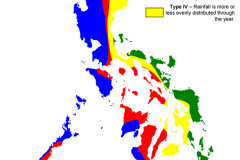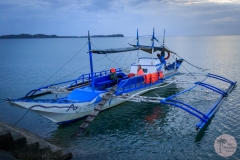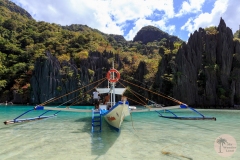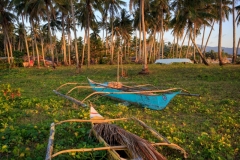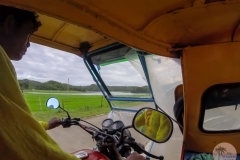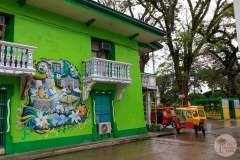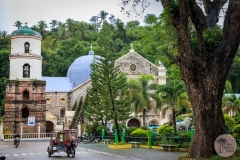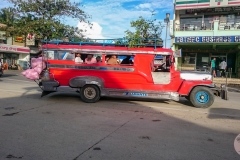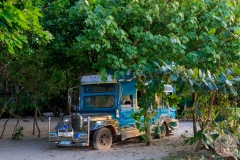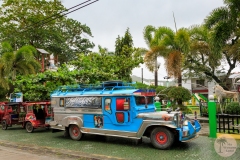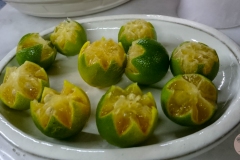Here you can get an impression of the Philippines
First of all some interesting facts about the Philippines
(Source a.o. Wikipedia)
- The Philippines are the fifth largest island state in the world.
- They consist of 7`641 islands, of which 880 are inhabited.
- 13 dieser Inseln haben eine Fläche von mehr als 1`000 km² (11 davon mehr als 2`500 km² !).
- The country`s divided into 3 major regions:
Green shows the Luzon archipelago in the north and west. It mainly consists of the islands of Luzon, Masbate, Mindoro and Palawan.
Blue are the Visayas archipelago in the middle, which includes the islands of Bohol, Cebu, Leyte, Negros, Panay and Samar.
Purple shows the archipelago of Mindanao in the south. That includes, among others, the islands of Basilan, Jolo, Mindanao and Basilan.
Which parts of the Philippines I personally would avoid
- South of the islands Mindanao, Sulu and Palawan. Particularly in southern Mindanao, armed clashes between rebels of the separatist MNLF (Moros National Liberation Front), the Islamist MILF (Moros Islamic Liberation Front) and government troops occur time and again. According to some Internet sites, the part of Palawan where the airport of Puerto Princesa is located isn`t a problem.
- The area around Manila due to the 2 active volcanoes Mayon and Taal. Mayon is located about 300 kilometers southeast of the capital Manila and is the most active with 48 known eruptions. Vulcan Taal follows with 33 eruptions on second place. The Taal is located 60 km south of Manila and still had a warning level of 4 out of 5 on 22.1.2020, as it`s still active after an eruption on 12.1.2020. There`s further concern that a really powerful eruption`s still in preparation.
- Java and the area around it for the still active volcano Merapi. The volcano Merapi is one of the most dangerous volcanoes in the world. Last eruption 3.3.2020.
- Negros Island due to the volcano Kanalon. The largest active volcano in the Philippines could explode with steam at any time ( status March 2020).
- Here a good site with updates about volcanoes, that I found regarding this research.
Currency and languages of the Philippines
- The official currency is the Philippine Peso (PSH). 1 Euro equals 54.97 Philippine Pesos (as of March 2020).
- About 170 languages are spoken in the Philippines.
- Spanish (Filipino Spanish) was the first official language of the island state and remained for over three centuries.
- Under the occupation of the United States and the civilian government established by them, the integration of English as the language of instruction in schools began. Around 1901, education was institutionalized and English was chosen as the general medium of teaching.
- Today’s official languages are Filipino, a descendant of Tagalog, and English.
Visa and other information about entering the Philippines
- European or American tourists, for example, can stay a maximum of 30 days without a visa.
- Here you can find an official and complete list of the countries to which this arrangement applies.
- After that you can extend your visa to the maximum of 59 days at any Immigration Office in the Philippines for a fee (you could also arrange the 59 days visa at the Philippine Embassy in your country from home).
- These 59 days can be extended again and again until you have spent 3 years there as a tourist (or you can extend it to the 3 years). This is the maximum you can spend as a tourist in the Philippines.
- You could also apply for a tourist visa before the trip, this costs between 30 and 90 euros and entitles to a stay of up to one year with multiple entries.
- To enter the country your passport must be valid for at least another 6 months.
- For tourist trips, there`s an official obligation to be able to prove a return flight or onward flight to another country. However, this is not always checked at the airport. We only had to show our return flight ticket once. It`s easier if you`ve already booked a return or onward flight and can show it.
- Here the website of the (german) Foreign Office with lots of information about the Philippines.
Climate in the Philippines
(Source: beste-reisezeit.org/pages/asien/philippines.php)
- The Philippines can be divided into 4 climate zones (see picture).
- Best time to travel to the Philippines is during the dry season from December to February. Then the temperatures are bearable, there`s less rainfall and there`s probably no danger of getting into a typhoon. We were there from 24.12.2018-13.1.2019 and still experienced heavy rain and a storm on a few days.And the violent typhoon Ursula raged on Christmas 2019, so you can’t really rely on it.
- Rainy season in the months from June to October applies particularly to the north and east of the Philippines with the areas of Luzon and Palawan.
- Dry season`s approximately from November to February (“cool” dry season).
- Hottest months are around March-May (warm dry season).
- In the bay of Donsol (southern tip of Luzon Island) whale sharks can be observed between December and May (especially in March and April). During this period the waters here are particularly rich in plankton, which attracts the largest fish on earth.
- Try to avoid the rainy season from June (or even May) to October (or even November), as in that period an incredible amount of rain will fall. That`s why the Philippines are often the victim of destructive typhoons, which make it extremely difficult to get away. Numerous roads are then impassable and air and shipping traffic in the Philippines comes to a standstill time and again.
Some explanations of terms
- Banca: A banca is a traditional boat that is often used for fishing. Characteristic for this type of boat are the wooden outriggers that are responsible for the balance. They`re available in various sizes.
- Tricycle: A type of tuk tuk. It`s a converted 125 cc motorcycle with attached sidecar. Sometimes a lot of people and luggage are stuffed into it. 😉 The tricycles are always nicely colored and partly additionally decorated and often the family name and/or the name of the wife, girlfriend or daughter is written somewhere in quite big letters.
- Jeepney: The most common form of public transport. These buses have a very special retro-style front and are also always colorful and kitschy decorated. Therefor they have become an art form in the Philippines over time.
- Calamansi: Calamansi is a citrus fruit about the size of a golf ball. It`s a cross between a kumquat and a type of tangerine. It has a very refreshing taste.
For all those who remained at home or those who miss the taste of the calamansi (like me). I`ve got good news! At Razzia Restaurant& Bar in Zurich you can get calamansi ice cream! For me THAT`S how the Philippines taste!
Religions in the Philippines
(Source: Pew Research Center. The Global Religious Landscape)
- 92.6 % are Christians (about 86% of them Roman Catholic, the rest belong to various nationalised Christian cults).
- Besides the Christian majority there`s a strong Muslim minority of 5.5 percent. This is concentrated on the southern islands of Mindanao and Sulu and the south of Palawan.
- About 1.5 % are non-Western, indigenous and live scattered in isolated mountain regions and on small islands.
- 0.6 % Atheism and others.
The more or less contemplative season on the tropical island state lasts four months (from September to January). Therefore one third of the year`s Christmas! Nowhere else in the world can one find such a thing. (Source: welt.de)
Number of inhabitants and Birth rate
What we noticed very much is that the people in the Philippines are extremely proud of their children. Sometimes they were presented to us like a circus attraction (because they love them so much, not so that we give them money).As soon as they are told that they have a sweet child, they start to shine and the child in question is called. Once a woman wanted to show me what her little boy could do. Highfive was of course some of it. But when she told him if he would like to give me a kiss, it became too much for me and I politely declined.
Also the question why we don’t have children when we are married, was asked everywhere. Always followed by the question if we are married, that was question number 1. After that came the next question and that was if I`m pregnant (although I really don’t look like ). Don’t take it personally, having children seems to be very important for the Filipinas (and Filipinos).
Despite everything, a Filipina has an average of “only” 2.53 children (see here).
- The current number of inhabitants is 108`632`100 (as of May 2020). Some islands of the Philippines are among the most populated areas in the world and the population continues to grow by about 2 million inhabitants per year.
- Here`s the always up-to-date population clock for many countries (in German).
Malaria and dengue fever risk
- The risk of malaria is generally low. It`s higher in the rural area of Apayo Province, Zambales, in the western part of the island of Mindoros, and on the islands of Mindanao, the Sulu archipelago (Tawi Tawi) and the Palawan Island (jungle region). Malaria occurs all year round in areas below 600 meters above sea level. It`s spread by mosquitoes.
- The Philippines are the front runner in Asia when it comes to the dengue virus. In the summer of 2019, the Philippines’ Ministry of Health even issued a national dengue warning. The virus is transmitted by mosquitoes. The peak of transmission`s during the rainy season from May to November. Fortunately, the number of cases is declining again. The values of the first weeks in 2020 are 42% lower than in the same period in 2019. What`s the best way to protect yourself against dengue fever? Experts recommend a mosquito repellent with the active ingredient DEET (diethyltoluamide).
Here more tips to the tropical diseases in the Philippines and much more (only in German).
Info to Bohol Island
Bohol is a popular tourist island because of the famous Chocolate Hills and the presence of the sweet Cobolt-Maki (simply called Tarsier). What`s to pay attention to:
- The Chocolate Hills on Bohol are supposed to be brown by the end of the dry season (March, April), but there`s no guarantee for that. We were on Cebu Island, which is located next to Bohol, at the end of December and therefore we didn`t visit the Chocolate Hills.
- During the rainy season (May or June to October or even November) they`re covered with green grass.On many photos I have seen online that this looks nice too, just not like chocolate hills 😉
- First I wanted to plan a stopover on Bohol to see theTarsiers. With their huge eyes (which are bigger than their brain) they look very cute. I started to inform myself about them and found out some scary things! To the welfare of these poor little animals I decided not to include a visit (not even to the Philippine Tarsier and Wildlife Sanctuary in Corella) in our trip.
- What I found out was this: The Philippine Tarsiers are so terrified and photosensitive that they commit suicide when they`re feeling too stressed. This happens when too many people stare at them, are loud, take pictures of them with the flash of the camera or even touch them! Then they hit their head against something hard until they die! So please stick to the rules and if you want to see them, only go to the Philippine Tarsier and Wildlife Sanctuary in Corella, don’t stop somewhere on the side of the road and let them put one on your hand or somewhere else for a fee or something like that!
Noise
With our booked accommodation we some times had the feeling that we were staying next to a farm. The chickens, pigs and dogs of the neighbors were permanently running around freely. But we wanted a (as good as possible as a tourist) real Philippine experience and therefore we booked personal accommodations and no mass tourism hotel complexes.
On our first night back in Switzerland I had the feeling that the world had died out because of our relatively soundproof windows. No croaking, grunting and barking, just total silence. On the other hand there was no sea sound and in January temperatures of around 30 degrees. Well, you just can’t have everything. 😉
- Be sure to bring noise protection for your ears! Not only the animals, but also the motor of the tricycles is extremely loud (I also used them a lot during the rides with the bancas). I`m a big fan of the brand Happy Ears from Sweden. I like that the part that sticks out of the ear`s transparent and the small box is very practical. It`s always in my wallet and has been my faithful companion for years. I bought it in an Amavita store back then.
Singing
What we noticed right at the beginning of our time in the Philippines was that the Filipinos love to sing. They are huge fans of TV shows where there`s singing and also of karaoke. Therefore we met singing people everywhere. In the waiting area at the boat harbour, when we shared a taxi with a stranger etc. First we were surprised when suddenly somebody started to sing somewhere (yes, we`re Swiss and not used to it), but soon we started to appreciate the warmth of the Filipinos (and missed it when we were back home).
The nature of Filipinos
We met (with a few exceptions) only very friendly people. It`s their way to be extremely helpful. Wherever we were looking for something, we were immediately approached and asked if they could help us (without asking for money). The only exception was Boracay, there were e.g. men who almost ripped the luggage from our hands and wanted to take it to the boats, to a tuk tuk etc. and then reached out their hand to get money. There it`s just too touristy. Such behaviour is actually not their way at all.
We also noticed that they`re very curious and open-minded. Again and again we were asked from which country we are. That was not at a market or in the shops, where this is always asked in all holiday destinations, but by some random people out of pure interest.
The Philippine kitchen
The Philippines don`t have a really typical cuisine like other countries. It`s composed of different influences from various countries and cannot be compared with the cuisine of other Asian countries. Everything was all rather bland, it`s spiced very little and it was never hot at all.
We encountered one thing again and again (and again and again…) and that was rice. Dry rice well noticed (without tasty sauce as it`s the case in Thailand). Rice with chicken, with pork and with fish. That applies for any time of the day. In the beginning it was nice, but soon we missed a certain kind of variety and towards the end we only looked for vegetarian and vegan restaurants. We couldn`t understand why there are not more vegetables on the menu. The conditions for it to grow prosper would be there. As we experienced it just didn`t seem to be favored by the Filipinos. Anyway, they`re very addicted to unhealthy stuff and sugar (not exactly the best influence the West has on them).
Adobo and suckling pig Cebu Style (Cebu Lechon) are e.g. well-known Philippine dishes. Adobo is roasted chicken or pork served with vegetables. We mainly found the sucking pig in Cebu itself, but we never tried. Typical of the Cebu style are the spices and herbs, especially the combination of lemon grass, leek, salt, pepper and garlic, which are used as filling for the pork belly.
Here are the vegan restaurants, we liked very much:
- The Birdhouse, Marimegmeg Beach, El Nido
- Shaka Cafe, Lio Beach, El Nido
- Taste, El Nido Town
By the way, you can find my separate post on El Nido here.
And if you`re interested in a tour to the lagoons and rocks around El Nido you can check out my separate post about it (with a lot of photographs)
Trash
Unfortunately, the Filipinos are not nearly as enlightened as we are in Europe when it comes to waste disposal and waste separation. That`s the reason they just throw their garbage on the floor and that even at the beautiful beaches. We talked to a Filipino, who said that the speeches of some tourists, who have come to the Philippines more and more in the last few years, are slowly making them think. But it still needs a lot of time until their behaviour changes noticeably (if at all…). It`s a great pity, if one takes so little care for such a beautiful country! Of course not only the Filipinos themselves leave the garbage lying around, also many tourists are ignorant (like many people all over the world).
Surfing in the Philippines
From some friends I heard again and again about Siargao as THE perfect surf spot. Here you can find a lot of tips and information about the best surf spots in the Philippines.
Kitesurfing is also very good in the Philippines. More about the best kitesurf spots here.
Also Wakeboarding is getting more and more popular. Here are a few suitable places for it.
Taking pictures
The Filipinos we saw on our trip were not camera shy at all or see it as something annoying when you`re taking pictures. They`re usually very happy about every camera they see. They wave and draw attention to themselves so that they might be on one of the photos.
My conclusion on the Philippines:
We always felt safe and were treated friendly everywhere. We also found it very practical that almost everyone spoke English very well. The people we met seemed modest and very grateful for the food nature provides them with. The way the current president Rodrigo Duterte governs the country is very controversial and extreme. But the island state simply offers so much beauty that we`ll still travel to the Philippines again.
Other practical tips
- Be sure to bring bathing shoes.
- Please pay attention to the corals when you go ashore in the shallow water. Many tourists trample carelessly on them, this way they`re going to be destroyed!
- Attention! There are stone fish in the Philippines! These are the most dangerous fish in the world, they can even be deadly for humans! Always pay attention, since they look like stones, you can’t see them well. A few times we`ve seen a warning sign on a beach and when we left the banca on this trip the captain warned us about it too.
- Don`t forget to bring a light windbreaker and a functional jacket, as it`s sometimes quite windy during a trip with a tricycle and a banca and in the waiting halls of the airport, the air conditioners cool down extremely.

